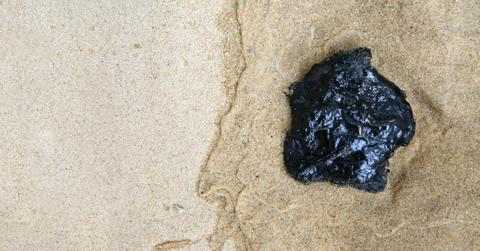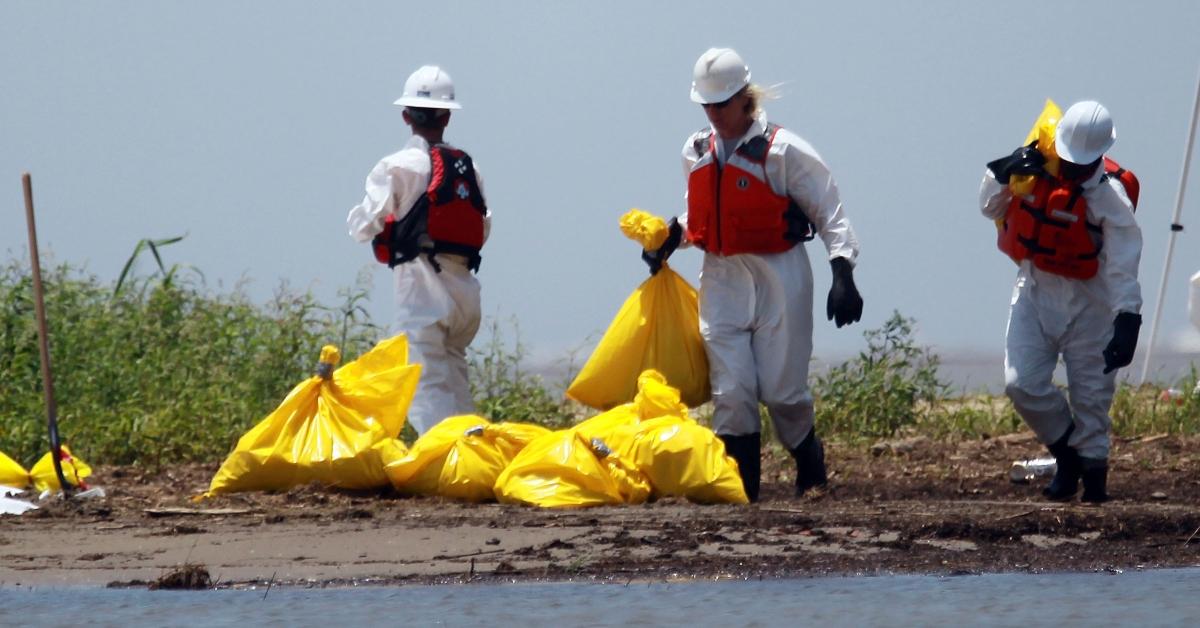What Are Tar Balls? These Mysterious Objects Are Washing Up On Texas Beaches
Published July 24 2023, 9:23 a.m. ET

When you go to the beach, you usually expect to go home covered in sand — but beachgoers in Texas are getting tar stuck to the bottoms of their feet... and other places.
In July 2023, tar balls were seen washing up on Texas beaches in Galveston and Bolivar Peninsula, as reported by UPI. Although they seem pretty gross, officials say they’re nothing to worry about.

What are tar balls?
According to the National Oceanic and Atmospheric Administration (NOAA), tar balls are little globs of oil that have turned into asphalt-like sticky balls after being tossed in the ocean waves and baked in the sun. The balls can range in size, but most are the size of a coin.
Tar balls can come from oil spills in the water. However, they can also occur naturally due to crude oil seeps in the ocean floor, per the NOAA. Scientists have found over 600 different oil seeps in the Gulf of Mexico, according to research published in ScienceDaily.
“Tar ball events along the Texas coast are a common phenomenon, especially during the summer months, due to ocean currents and tidal influences,” Texas General Land Office (GLO) officials told San Antonio television station KSAT.

According to the Texas State Historical Association, per The Galveston Daily News, tar balls have been showing up on Texas beaches since the 1500s. Spanish explorer Luis de Moscoso saw the oily globs floating on the water’s surface during an expedition in the area, as per The Daily News.
Are tar balls dangerous?
Small tar balls are harmless for most people if you have brief contact with them. However, they can cause problems for people sensitive to chemicals, especially hydrocarbons found in crude oil and petroleum products, the NOAA states. Tar balls can trigger an allergic reaction or rash in people sensitive to chemicals.
If you get some residue from a tar ball on you, the best way to clean it is with soap and water, baby oil, or cleaning paste sold at auto parts. Officials say never use gasoline, kerosene, diesel fuel, or solvent to get rid of the tar. Doing so is more of a health hazard than the tar ball.
What is being done to clean up the tar balls that have been washing up on Texas beaches?
Officials with the Texas General Land Office told KSAT that as of July 2023, Oil Spill Program "has increased its summer beach patrols coastwide and will be sampling beach tar to analyze and attempt to determine the tar’s origin.”

Samples of the tar balls will be sent to Texas A&M University for analyses and tracking, officials told KSAT.
The Land Office is required to do a cleanup if the tar balls cover more than 1 percent of a square meter or beach, reports The Daily News. Officials told the Daily News that there have been no reported injuries, health hazards or impacts to wildlife due to the tar balls.